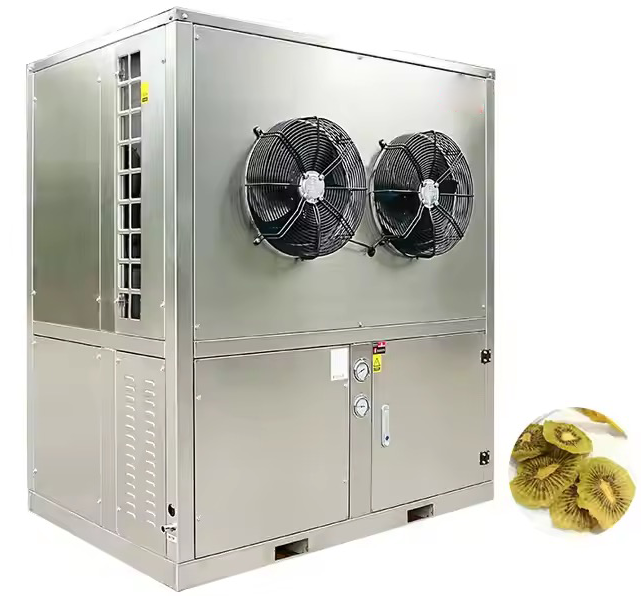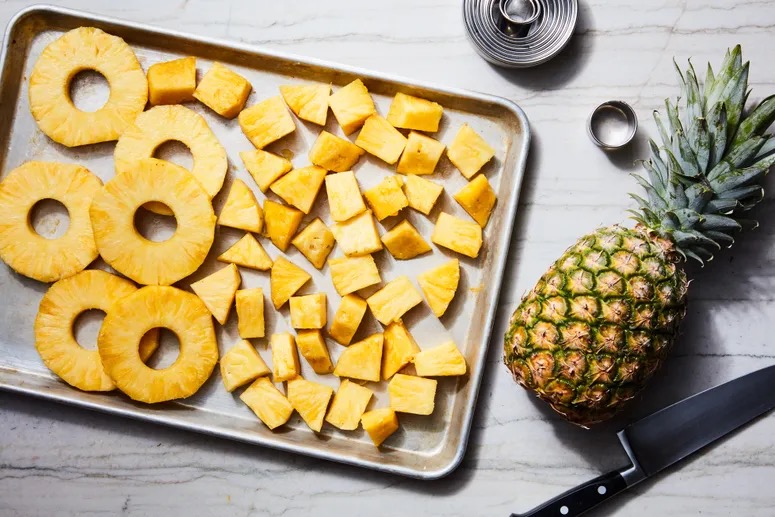
Content Menu
● Understanding Heat Pump Technology
● Key Advantages of Closed Dryers with Heat Pump
● How Closed Dryers Work
● Applications in Food Preservation
● Factors Influencing Energy Savings
● Comparing Heat Pump Dryers with Traditional Methods
● Future Trends in Food Drying Technology
● Conclusion
● FAQ
>> 1. What is a heat pump dryer?
>> 2. How does a heat pump dryer save energy?
>> 3. Can I use a heat pump dryer for all types of foods?
>> 4. Is there any nutrient loss when using a heat pump dryer?
>> 5. What are the environmental benefits of using a heat pump dryer?
● Citations:
The food drying industry has seen significant advancements in technology, particularly with the introduction of heat pump dryers. These dryers offer a revolutionary approach to food dehydration, providing numerous benefits over traditional drying methods. This article explores the advantages of closed dryers with heat pump technology, focusing on energy savings, efficiency, and the preservation of food quality.
Understanding Heat Pump Technology
Heat pump dryers operate on a principle similar to that of air conditioning systems. Instead of venting hot air outside, they recycle warm air within a closed-loop system. This method not only conserves energy but also allows for more flexible installation options.
- Energy Efficiency: Heat pump dryers use about 30% less energy than traditional vented dryers. They achieve this by reusing heated air, significantly reducing electricity consumption.
- Gentle Drying: Operating at lower temperatures (around 50°C), heat pump dryers are less likely to damage delicate foods or cause nutrient loss. This feature is particularly beneficial for fruits, vegetables, and herbs.
- Versatile Placement: Unlike conventional dryers that need external ventilation, heat pump dryers can be installed in various locations, making them suitable for small spaces or kitchens.

Key Advantages of Closed Dryers with Heat Pump
1. Increased Energy Efficiency
- The primary advantage of using a food heat pump dryer is its high energy efficiency. Unlike traditional drying methods that generate heat, heat pump dryers extract it from the ambient air. This process significantly reduces overall energy consumption and leads to substantial cost savings over time.
2. Cost-Effectiveness
- While the initial investment in a heat pump dryer may be higher than traditional methods, the long-term savings can be significant due to lower energy consumption. The operational costs are reduced as these dryers do not require any fuel or flames.
3. Precise Temperature Control
- Heat pump dryers maintain precise temperature control using sensors and thermostats. This capability allows food products to be dried at optimal temperatures, resulting in uniform products with consistent taste and texture.
4. Retention of Nutrients
- The gentle drying process preserves the nutritional value of food. Unlike sun-drying or hot-air drying methods that can lead to nutrient loss, heat pump drying helps maintain vitamins and minerals in fruits and vegetables.
5. Reduced Drying Time
- Compared to traditional methods, heat pump dryers can significantly reduce drying time due to their high heat transfer efficiency. This is particularly advantageous for perishable products that require rapid drying.
6. Increased Shelf Life
- By removing moisture effectively, heat pump drying inhibits the growth of bacteria and molds, prolonging the shelf life of food products such as fruits, vegetables, meats, and seafood.
7. Reduced Environmental Impact
- Using a food heat pump dryer has a lower environmental impact compared to other drying methods. These dryers do not emit pollutants and reduce the demand for fossil fuels through their energy-efficient operation.
How Closed Dryers Work
Heat pump dryers function through a closed-loop system involving several key components:
- Compressor: Pressurizes refrigerant to absorb heat from the air.
- Condenser Coils: Heated refrigerant passes through these coils to warm the air circulating around the food.
- Evaporator Coils: The warm air absorbs moisture from the food before passing through these coils where it cools down and condenses moisture into water.
- Water Collection: The moisture is collected in a tank or drained directly, preventing humidity buildup in the drying area.
This cycle continues until the food is adequately dried.
Applications in Food Preservation
Heat pump technology is not limited to laundry; it has significant applications in food preservation:
- Uniform Drying: Food dehydrators equipped with heat pumps ensure consistent drying across all trays, preventing uneven moisture levels that can lead to spoilage.
- Versatile Use: You can dehydrate various foods including fruits, vegetables, herbs, and even meats like jerky.
- Reduced Risk of Spoilage: By lowering moisture levels effectively, heat pump drying minimizes bacterial growth compared to preservation methods like canning or freezing.
Factors Influencing Energy Savings
Several factors contribute to the energy efficiency of closed dryers with heat pumps:
- Humidity Levels: The ambient humidity level affects how efficiently a dryer can operate. In humid conditions, it may take longer to remove moisture from foods; however, the overall energy usage remains lower than traditional methods due to continuous recycling of warm air.
- Load Size: The amount of food being dried influences energy consumption. While larger loads may require more time initially, they can be more efficient overall as they maximize the use of heated air throughout the drying process.
- Airflow Design: Efficient airflow design within the dryer ensures that warm air circulates evenly around all trays or racks containing food items. This design minimizes hot spots and cold areas that could lead to uneven drying and wasted energy.

Comparing Heat Pump Dryers with Traditional Methods
To better understand why closed dryers with heat pumps are superior for energy savings compared to traditional methods, consider the following comparison:
| Feature | Heat Pump Dryer | Traditional Dryer |
| Energy Consumption | Low (30% less than traditional) | High |
| Temperature Control | Precise | Variable |
| Drying Time | Shorter | Longer |
| Nutrient Retention | High | Moderate to Low |
| Environmental Impact | Minimal | Significant |
This table highlights key differences between these two types of drying systems and underscores why businesses should consider transitioning to heat pump technology for their food processing needs.
Future Trends in Food Drying Technology
The future of food drying technology is promising as innovations continue to emerge:
- Smart Technology Integration: Many manufacturers are now incorporating smart technology into their heat pump dryers. Features such as remote monitoring and automated settings allow users to optimize their drying processes based on real-time data analytics.
- Sustainable Materials: As sustainability becomes increasingly important in manufacturing practices, companies are exploring eco-friendly materials for dryer construction that enhance durability while minimizing environmental impact.
- Hybrid Systems: Some manufacturers are developing hybrid systems that combine solar power with heat pump technology. These systems utilize renewable energy sources during peak sunlight hours while relying on electricity during less favorable conditions.
Conclusion
Closed dryers with heat pump technology represent a significant advancement in food preservation methods. Their energy efficiency, cost-effectiveness, precise temperature control, nutrient retention capabilities, and reduced environmental impact make them an ideal choice for both commercial and home use. As consumers become more conscious of their environmental footprint and health choices, the adoption of heat pump technology in food dehydration will likely continue to grow.
Investing in closed dryers with heat pumps not only benefits businesses through reduced operating costs but also aligns with global sustainability goals by minimizing energy consumption and waste generation.
FAQ
1. What is a heat pump dryer?
A heat pump dryer is an energy-efficient appliance that dries foods by recycling warm air within a closed system instead of venting hot air outside.
2. How does a heat pump dryer save energy?
Heat pump dryers save energy by reusing heated air instead of generating new heat for each drying cycle, reducing overall electricity consumption by up to 30%.
3. Can I use a heat pump dryer for all types of foods?
Yes! Heat pump dryers are versatile and can effectively dehydrate various foods including fruits, vegetables, herbs, and meats.
4. Is there any nutrient loss when using a heat pump dryer?
No! Heat pump drying preserves nutrients better than traditional methods because it operates at lower temperatures that do not compromise vitamins and minerals.
5. What are the environmental benefits of using a heat pump dryer?
Heat pump dryers have a reduced environmental impact as they do not emit pollutants and consume less energy compared to traditional drying methods.
Citations:
[1] https://vn.dryers-dehydrators.com/info/advantage-of-food-heat-pump-dryer-81163580.html
[2] https://www.dryeratech.com/what-s-the-benefit-of-using-a-heat-pump-dryer.html
[3] https://www.familyhandyman.com/article/heat-pump-dryer/
[4] https://www.energystar.gov/products/clothes_dryers/heat-pump-dryer
[5] https://www.alamy.com/stock-photo/food-dehydrator.html
[6] https://www.youtube.com/watch?v=9DSGcVhjHEc
[7] https://www.youtube.com/watch?v=DeN-h6opueM
[8] http://sciencebeingjournal.com/sites/default/files/Octa%20J.%20Biosci.%20Vol.%2010%20(2)124-133_0.pdf
[9] https://www.bosch-home.com.sg/experience-bosch/living-with-bosch/fresh-reads/6-reasons-why-you-need-a-bosch-heat-pump-dryer-in-your-life
[10] https://www.istockphoto.com/photos/fruit-dryer
[11] https://www.youtube.com/watch?v=mtDzdYoyeR8
[12] https://www.youtube.com/watch?v=S-hDpODzIV0










